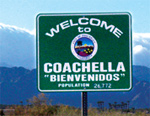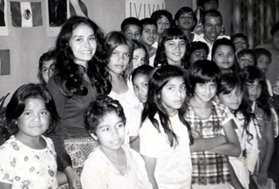|
 Coachella Valley is an arid, agricultural region of inland California, where a mostly Mexican labor force has worked for a mostly nonMexican landowning class for nearly a century. These conditions have become familiar to several generations of Mexican residents living in the valley, including Ramona Medina whose family migrated to the area during the first decade of the twentieth century. As a part of the settler generation for Mexican immigrants, Ramona eventually welcomed and made a home for several members of her family, including her sister Mercedez Gómez, and her niece, Socorro Gómez. Coachella Valley is an arid, agricultural region of inland California, where a mostly Mexican labor force has worked for a mostly nonMexican landowning class for nearly a century. These conditions have become familiar to several generations of Mexican residents living in the valley, including Ramona Medina whose family migrated to the area during the first decade of the twentieth century. As a part of the settler generation for Mexican immigrants, Ramona eventually welcomed and made a home for several members of her family, including her sister Mercedez Gómez, and her niece, Socorro Gómez.
 In 1976, Mexican children constituted a majority of the students in Coachella public schools, while Anglo teachers dominated the teaching faculty. That year, a young Socorro and her "comadre," Yolanda Almaraz, began their first year as teachers in the valley school system. Both bore witness to physical and emotional abuse of children, and endured some of their own, including a physical assault of Yolanda by one Anglo teacher. In response, they united a Mexican community no longer willing to tolerate such abuse. With the involvement of some exceptionally dedicated parents and colleagues, these women led a movement to demand reform in the local schools, which culminated in the 1976 student strike against the schools. In 1976, Mexican children constituted a majority of the students in Coachella public schools, while Anglo teachers dominated the teaching faculty. That year, a young Socorro and her "comadre," Yolanda Almaraz, began their first year as teachers in the valley school system. Both bore witness to physical and emotional abuse of children, and endured some of their own, including a physical assault of Yolanda by one Anglo teacher. In response, they united a Mexican community no longer willing to tolerate such abuse. With the involvement of some exceptionally dedicated parents and colleagues, these women led a movement to demand reform in the local schools, which culminated in the 1976 student strike against the schools.
|